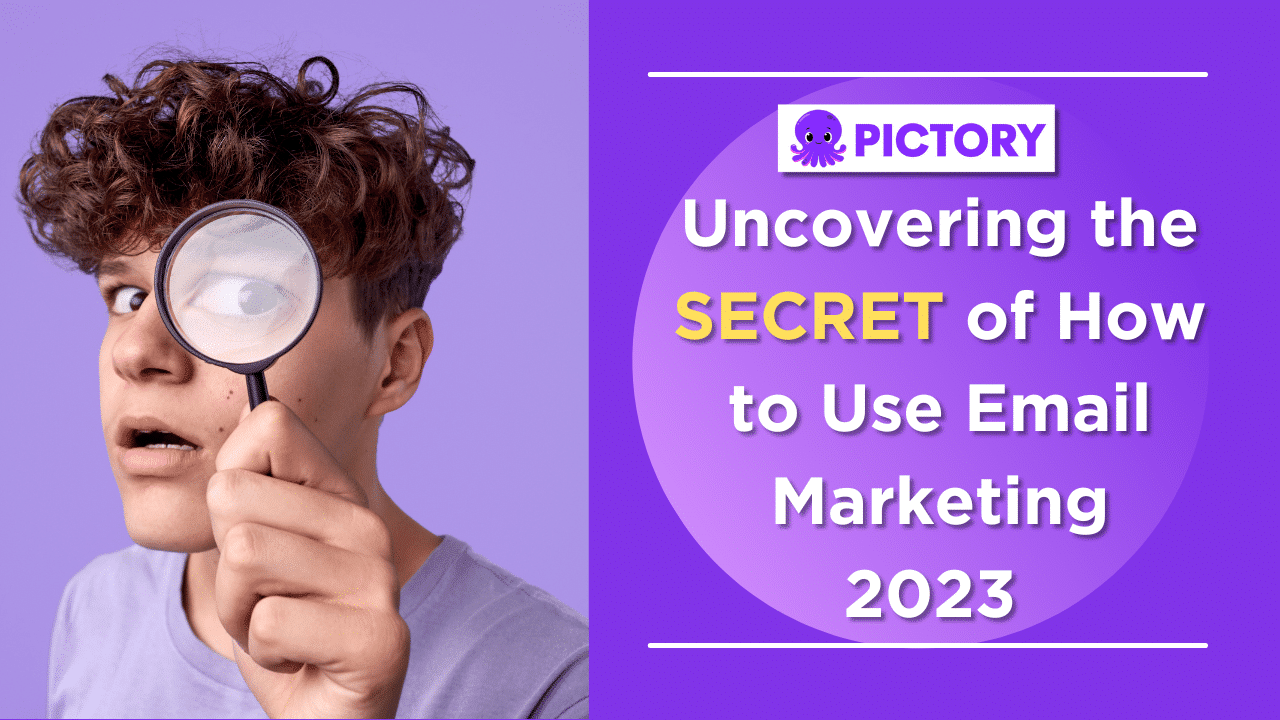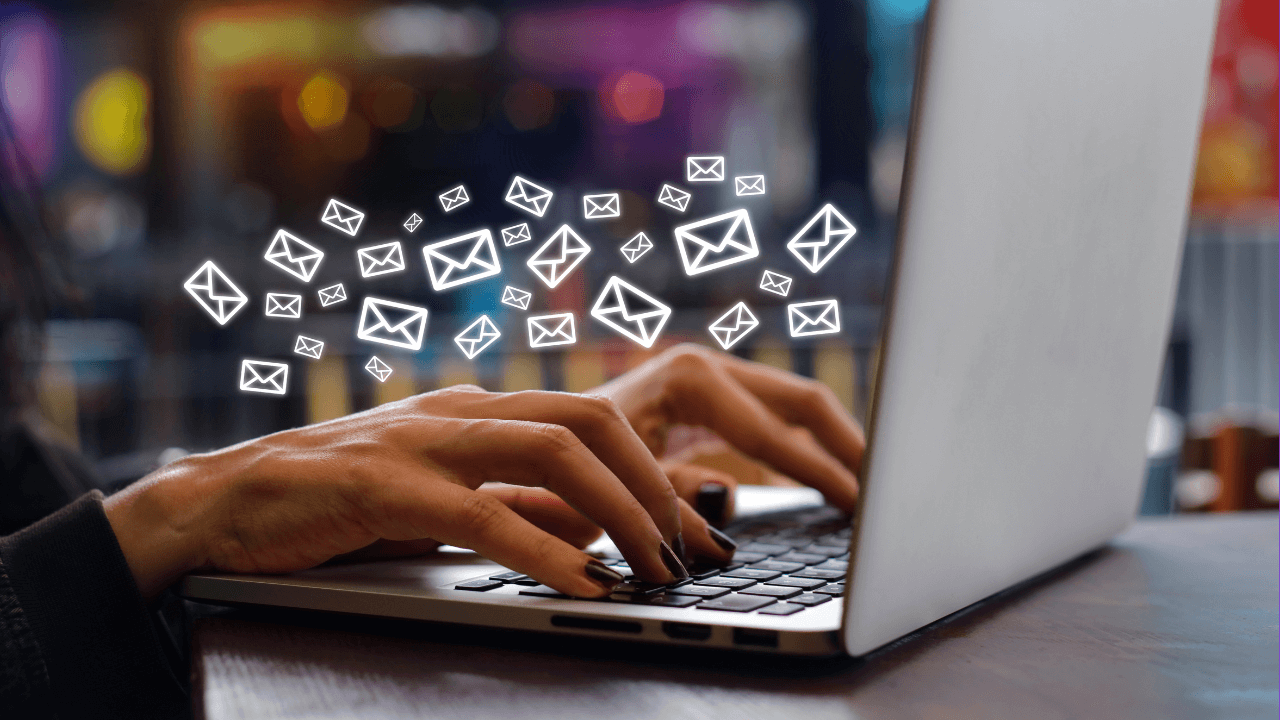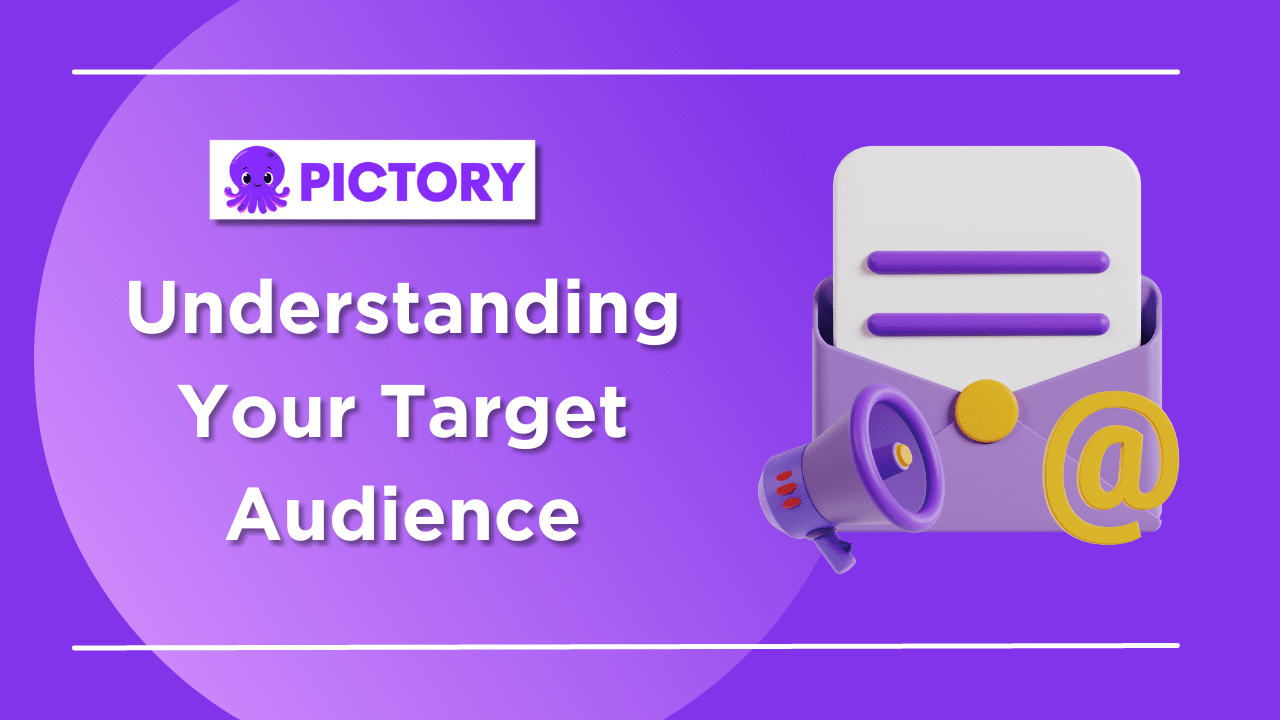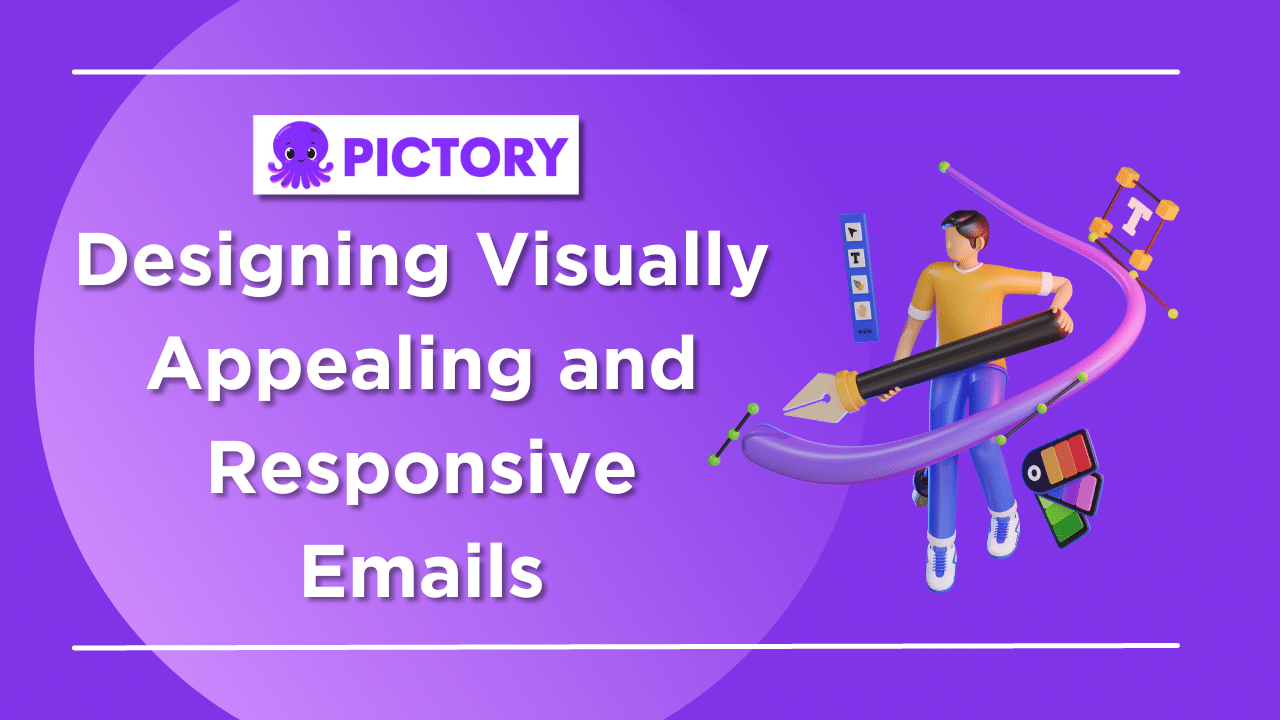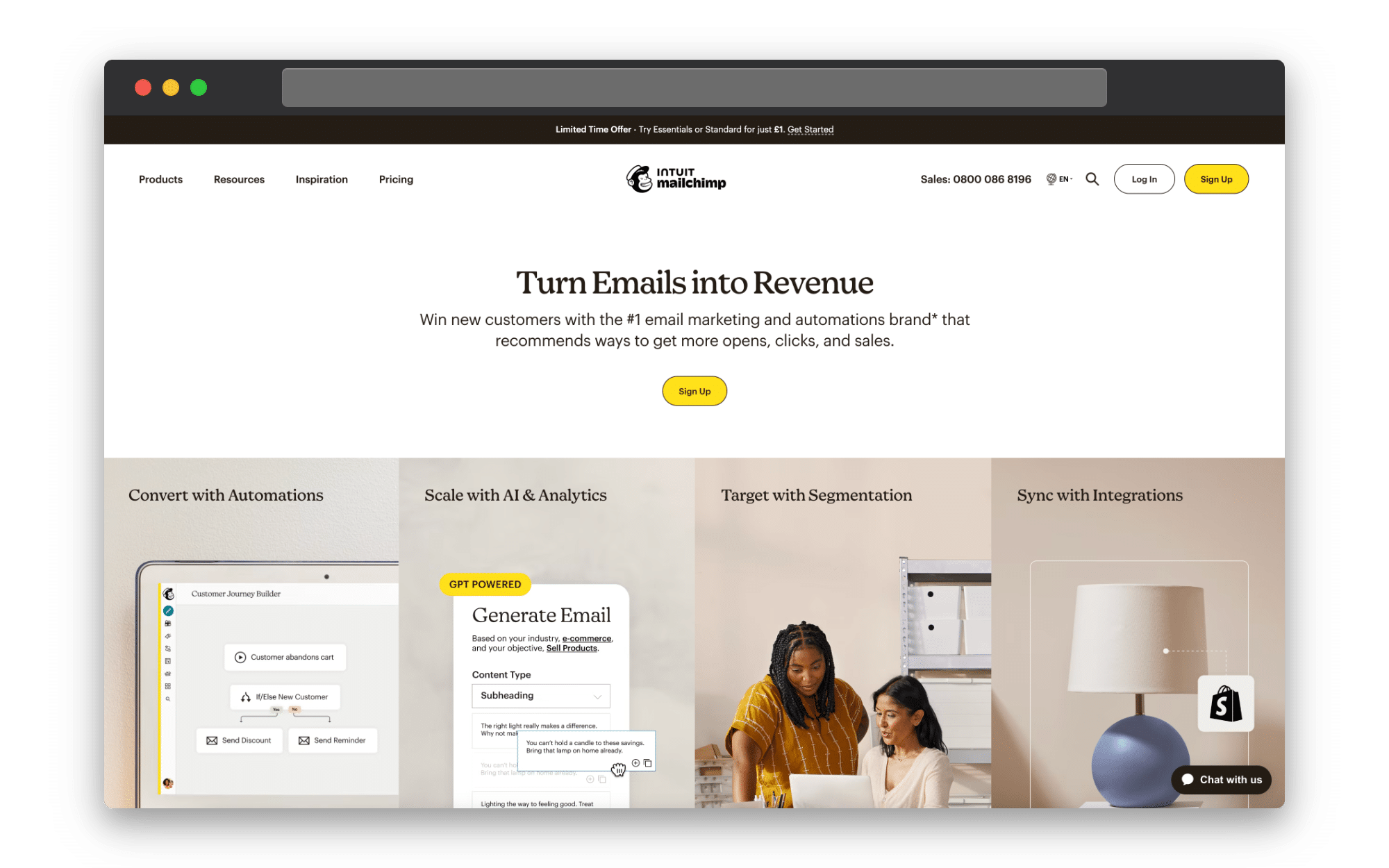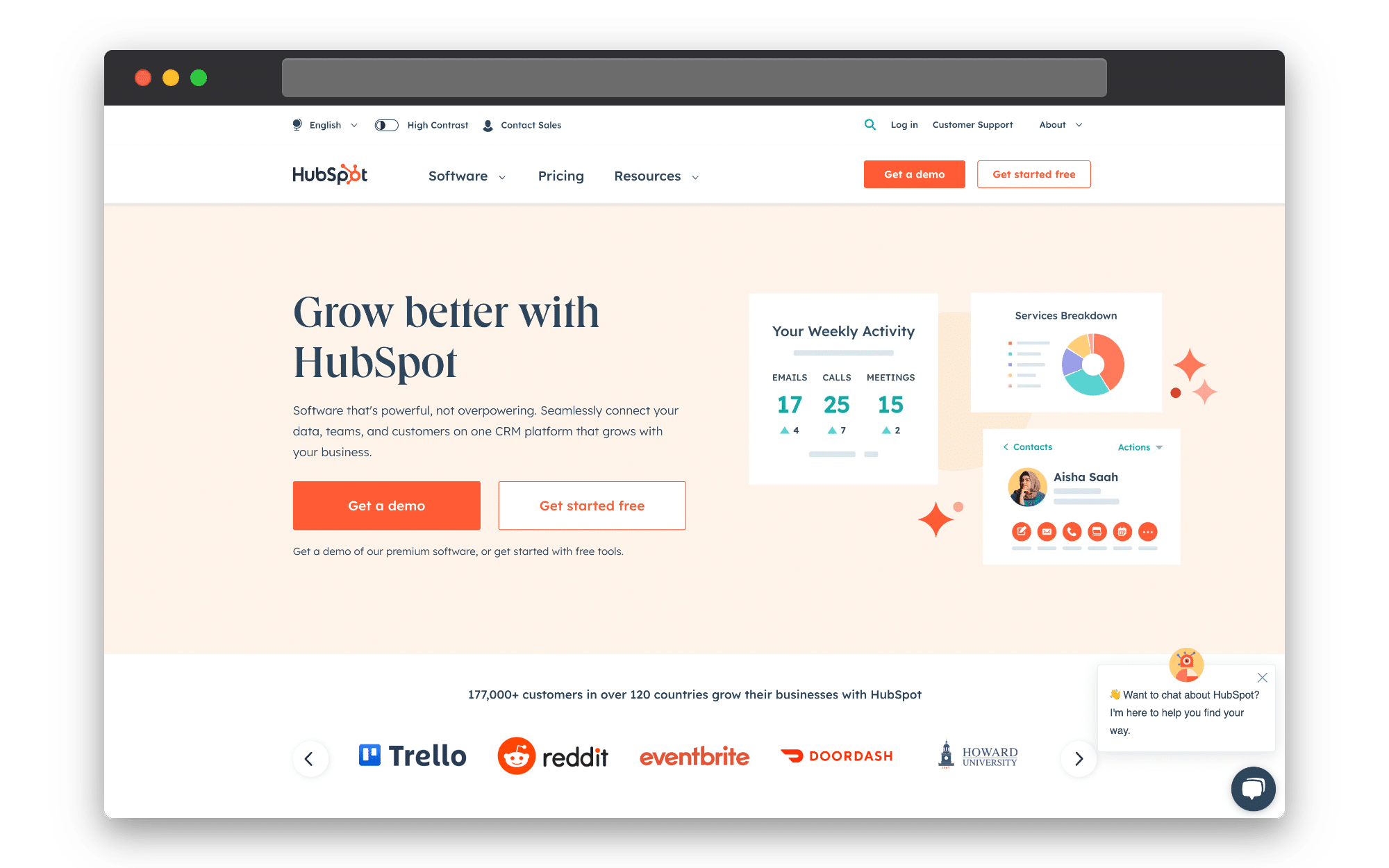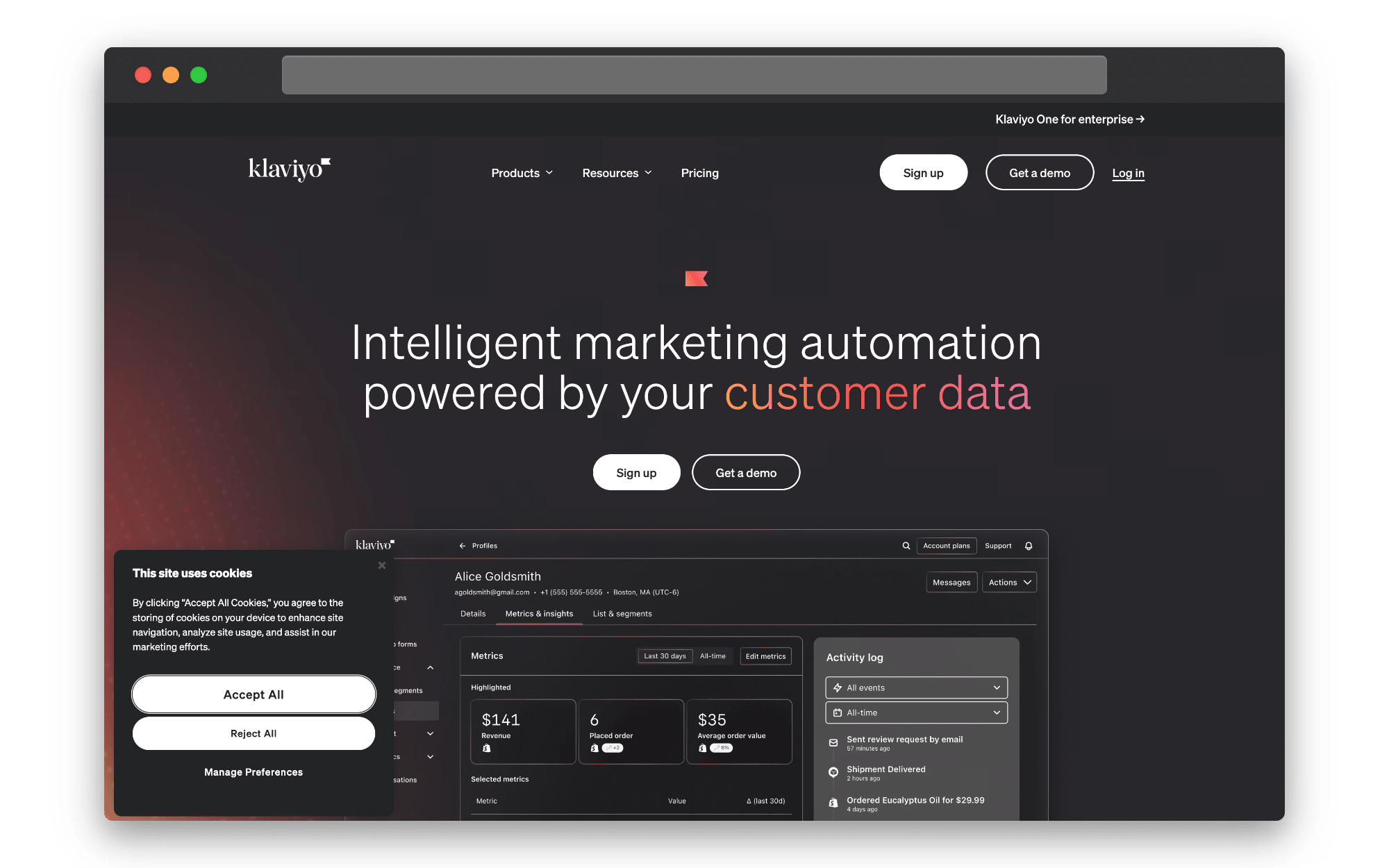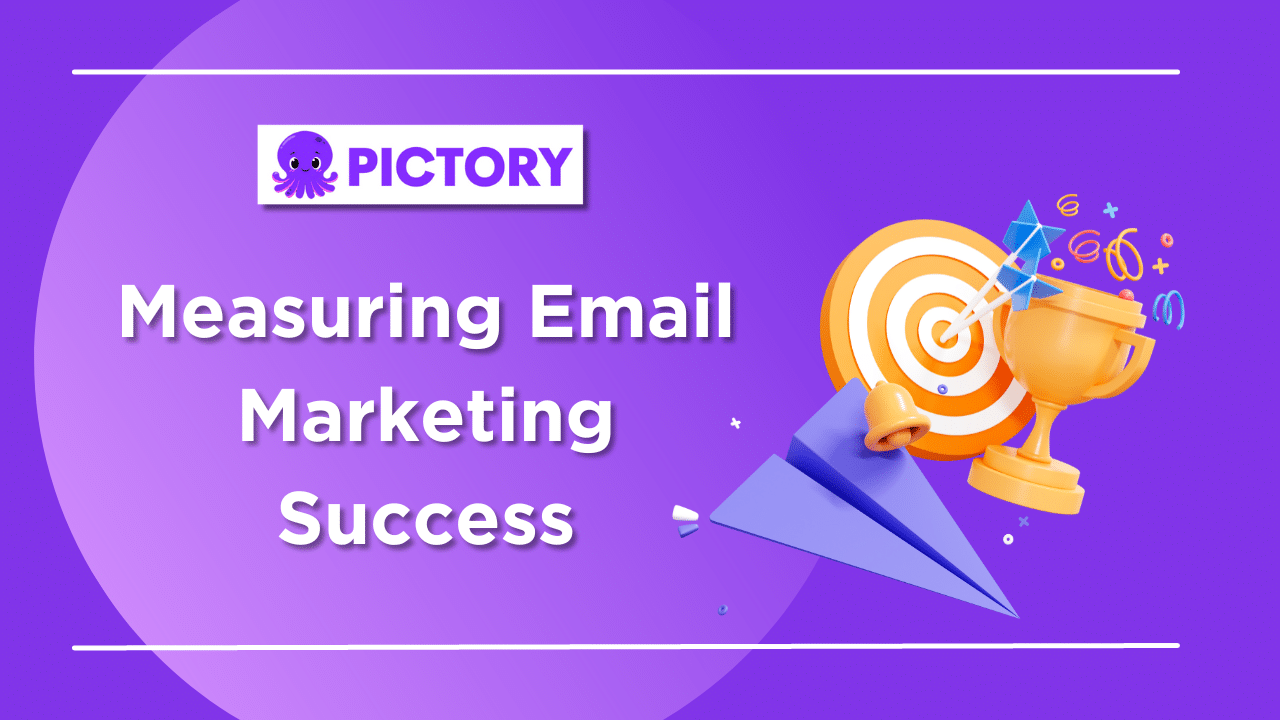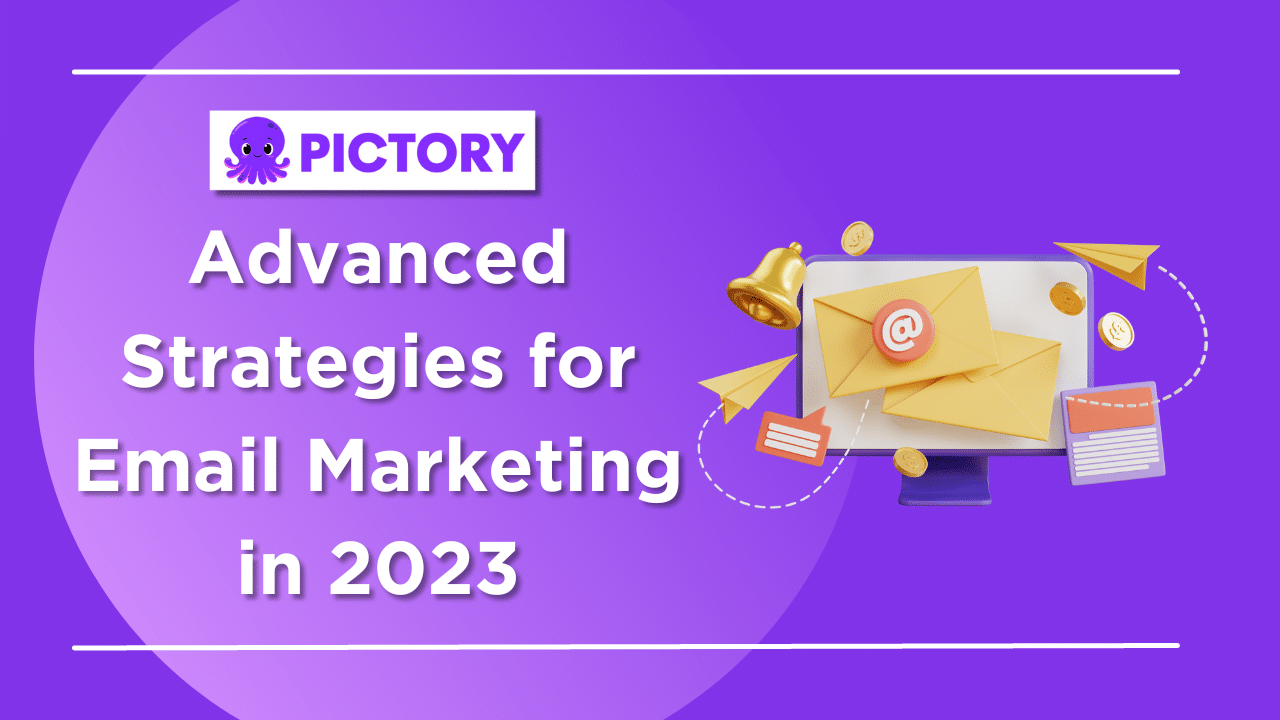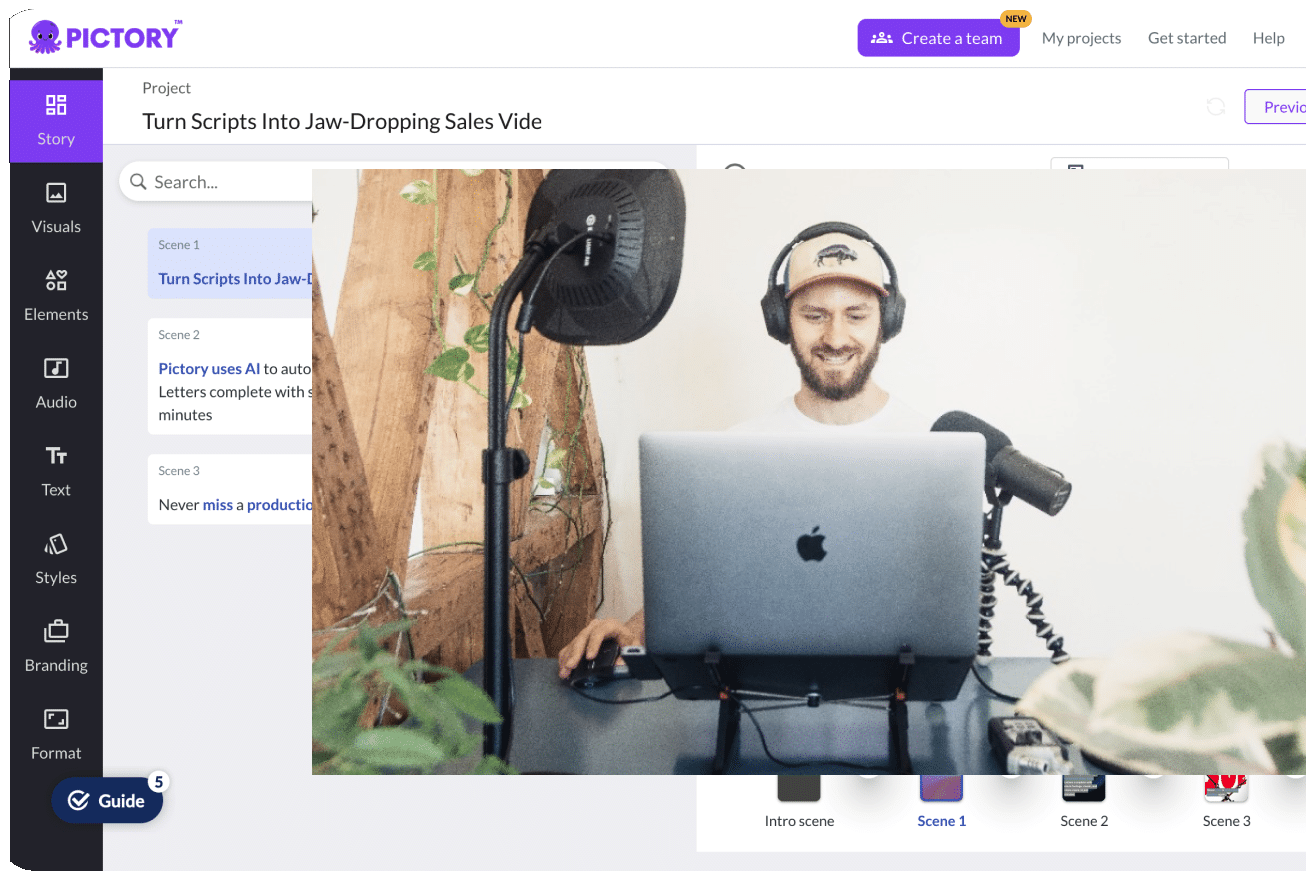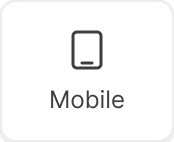Are you ready to take your email marketing campaign to the next level in 2023?
This blog post will help you uncover the secret to mastering email marketing in 2023 in a rapidly evolving digital landscape.
From understanding your target audience to implementing advanced strategies, this comprehensive guide will walk you through all aspects of successful email marketing campaigns, ensuring your business stays ahead of the competition.
Short Summary
-
Email marketing in 2023 will be driven by personalization, automation and data-driven strategies for improved ROI.
-
Understand your target audience to create tailored campaigns that drive engagement & loyalty.
-
Leverage advanced strategies such as trigger campaigns & multichannel integration to maximize customer engagement and conversions.
The Evolution of Email Marketing in 2023
As email marketing continues to grow and evolve, new trends and advancements are shaping the way businesses communicate with their customers.
Personalization, subscriber lifetime value, succinct content, compelling storylines, and immersive experiences, especially on mobile devices, have become essential factors in crafting a successful email marketing campaign.
Automation and data-driven strategies have also taken center stage, as businesses leverage tools like Campaign Monitor and Mailchimp to optimize their marketing efforts and achieve better results.
With an average ROI of $42 for every $1 spent, it’s no wonder approximately 80% of marketers would rather give up social media than email marketing.
To stay ahead in this ever-changing landscape, it’s crucial to adapt and incorporate the latest trends in your email marketing strategy.
This includes refining your subject lines, designing visually appealing emails, and utilizing automation and personalization techniques to create more targeted and relevant campaigns.
Understanding Your Target Audience
Knowing your audience is the key to creating high-value, targeted, and relevant content that speaks directly to your recipients.
By understanding your target audience’s demographics, interests, and actions, you can tailor your email marketing campaign to cater to their specific needs and preferences.
Segmentation plays a crucial role in the success of your campaigns.
Research shows that emails tailored to specific information, i.e. segmented and targeted emails, generate 58% of total revenue from emails.
This emphasizes the importance of personalization in email marketing strategies.
If segmentation techniques are utilized correctly, you can create personalized emails that resonate with your subscribers and drive engagement.
Gathering feedback from your subscribers and maintaining brand consistency across all your marketing efforts is essential for building customer loyalty and retaining your audience.
Continually refining your understanding of your target audience will lead you to create email marketing campaigns that convert and keep your subscribers coming back for more.
Demographics and Interests
Segmenting your audience based on demographics and interests is a powerful strategy for creating more targeted and relevant email campaigns.
Email list segmentation involves dividing your email list into smaller groups based on predetermined criteria such as age, gender, geographic location, and interests.
Data can be collected through signup forms and other customer interactions on your landing page, enabling you to group your subscribers based on their unique attributes and send tailored content that caters to their preferences.
This highly targeted approach can lead to higher engagement rates, improved customer satisfaction, and ultimately, better campaign performance.
Engagement Patterns
Analyzing your subscribers’ engagement patterns can provide valuable insights into how they interact with your emails and help you optimize your email marketing strategy for improved results.
One key metric to monitor is the click-through rate (CTR), which indicates the number of people who have clicked on a link in your email.
A low CTR may suggest that your message is not adequately tailored or resonating with your audience.
By staying up-to-date with the latest engagement patterns in email marketing, such as hyper-personalization, dark mode compatible emails, interactive content, microsegmentation, and a strong emphasis on privacy, you can make data-driven decisions to refine your campaigns and enhance your overall performance.
Buyer Personas
Developing detailed buyer personas is essential for understanding your audience and creating more effective email marketing campaigns.
Buyer personas are semi-fictional representations of your ideal customers, derived from data and research.
These personas help you tailor your content, messaging, product development, and services to the specific needs, behaviors, and concerns of your target audience.
To create buyer personas, review existing customer data, conduct surveys, and engage in customer interviews to gain a better understanding of your audience.
Once you have established your buyer persona, leverage them to inform your email marketing campaign and create a more personalized experience for your subscribers.
Crafting Compelling Subject Lines and Preview Text
Subject lines play a pivotal role in determining the success of your email marketing campaigns.
In fact, 35% of email subscribers open an email solely based on the email subject line. An attention-grabbing subject line can make the difference between your email being opened or ignored in a cluttered inbox.
To craft compelling subject lines, consider leveraging power words, incorporating numbers, and avoiding words that may trigger spam filters.
Additionally, personalizing subject lines by including the recipient’s name can further increase open rates and engagement.
By continually refining your subject lines and preview text, you can increase the likelihood of your emails being opened and read, ultimately improving your overall campaign success.
Designing Visually Appealing and Responsive Emails
Creating visually appealing and responsive email designs is crucial for enhancing user experience and driving conversions.
Research shows that visuals are more engaging, memorable, and effective at making content more visible, with visuals being recalled at a rate of 65% up to three days later, compared to text-based content at 10%.
When designing your email campaign, prioritize the message and maintain a simple design, ensuring that elements are arranged in an organized hierarchy.
Utilize tools like Mailchimp, which offers resources for coding HTML emails, to create visually engaging emails that capture your subscribers’ attention and drive them to take action.
Responsive email design is also essential, as more people are accessing their emails on their mobile device.
Ensure that your emails are optimized for various screen sizes and platforms to provide a seamless experience for all your subscribers, regardless of the device they are using.
Utilizing Automation and Personalization
Marketing automation and personalization have become increasingly important, as they allow businesses to create more targeted and relevant campaigns that resonate with their subscribers.
Automation platforms, such as HubSpot, ActiveCampaign, and Marketo, enable businesses to set up automated emails that are triggered by predetermined user actions, such as a welcome email for new subscribers or a cart abandonment email for forgotten items.
Personalization techniques, such as incorporating the recipient’s first name in the subject line and segmenting mailing lists based on demographics and interests, help create a more customized email experience that drives engagement and conversions.
By leveraging automation and personalization, you can create more targeted and relevant email campaigns that cater to the unique needs and preferences of your audience.
Marketing Automation Platforms
Selecting the right marketing automation platform is crucial for the success of your email marketing campaign.
Popular platforms like HubSpot Marketing Hub, ActiveCampaign, Braze, Klaviyo, Insider, and Marketo offer various features and pricing plans to cater to your specific needs and budget.
When choosing a platform, consider factors such as ease of use, available features, scalability, and integration capabilities with your existing systems.
By selecting the right marketing automation platform, you can streamline your email marketing efforts, improve your overall campaign performance, and ultimately, achieve better results.
Dynamic Content and Personalization Techniques
Dynamic content and personalization techniques enable you to create customized email experiences for your subscribers, driving engagement and conversions.
Some of the most effective techniques include utilizing live dynamic content, leveraging the recipient’s location data, constructing targeted emails, and using AI to personalize emails.
To acquire the necessary information about your subscribers, be strategic and comprehensive in your data collection methods.
This may include using signup forms or tracking user behavior on your website.
Once you have collected sufficient data, you can incorporate dynamic content and personalization techniques into your email campaigns to create more targeted and relevant experiences for your subscribers.
Measuring Email Marketing Success
Measuring the success of your email marketing campaigns is essential for understanding their effectiveness and making data-driven decisions to improve future campaigns.
Key metrics to monitor include the unsubscribe rate, bounce rate, cart abandonment rate, open rate, and click-through rate.
By consistently tracking and analyzing these metrics, you can gain valuable insights into the performance of your email marketing campaigns and identify areas for improvement.
This data-driven approach enables you to refine your email marketing strategy, optimize your campaigns, and ultimately, achieve better results for your business.
Key Metrics to Monitor
In order to optimize your email marketing campaigns and drive better results, it’s crucial to monitor and analyze key metrics such as email delivery rate, open rate, click-through rate, conversion rate, and bounce rate.
Understanding these metrics allows you to identify areas for improvement and make data-driven decisions to enhance your overall campaign performance.
Keeping a close eye on these essential metrics means you can ensure that your email marketing efforts are delivering the desired results and driving success for your business.
A/B Testing
A/B testing is an invaluable tool for optimizing your email marketing campaigns and driving better results.
This process involves conducting experiments to compare two versions of an email message, in order to determine which performs better in terms of click-through rates or other desired outcomes.
To conduct effective A/B tests, modify only one element at a time, such as the subject line, call-to-action, or content, so you can accurately identify what is having a significant impact on your campaign performance.
By continually refining your email campaigns through A/B testing, you can gather valuable data to inform your future campaigns and ensure your emails resonate with your subscribers and drive engagement.
Advanced Strategies for Email Marketing in 2023
Staying ahead of the competition in 2023 requires adopting advanced email marketing strategies, such as trigger-based campaigns and multichannel integration.
Trigger-based campaigns are event-based campaigns that are initiated upon the occurrence of a certain action, such as a welcome email for new subscribers, cart abandonment emails for forgotten items, or re-engagement emails for subscribers who have not opened an email.
Marketing automation plays a crucial role in trigger-based campaigns, as it is responsible for sending all emails automatically once the triggers have been set up.
Utilizing trigger-based campaigns can help maintain relevant communication with your subscribers based on their interactions with your business, keeping your brand top-of-mind and encouraging future engagement.
In addition to trigger-based campaigns, integrating your email marketing efforts with other marketing channels, such as social media, can help expand your brand reach and improve overall marketing campaign performance.
Implementing a cohesive multichannel marketing strategy enables you to create a unified experience across all channels, driving greater customer engagement and conversions.
Trigger-Based Campaigns
Creating and implementing a trigger-based email campaign can help you maintain relevant communication with your subscribers based on their actions, ultimately driving engagement and conversions.
Examples of trigger-based campaigns include welcome emails for new signups, cart abandonment emails for items that have been forgotten, and re-engagement emails for subscribers who haven’t opened an email.
To create and implement trigger-based campaigns, use marketing automation platforms that allow you to set up automated emails activated by predetermined user actions.
By leveraging trigger-based campaigns in your email marketing strategy, you can ensure that your subscribers receive timely and relevant content based on their interactions with your business, keeping your brand top-of-mind and fostering customer loyalty.
Multichannel Integration
Integrating your email marketing efforts with other marketing channels, such as social media, can help you expand your brand reach and improve overall campaign performance.
Creating a unified experience across all channels ensures that your message is consistent and engaging for your audience, regardless of the platform they are using.
To successfully integrate your email marketing campaigns with other marketing channels, understand your audience, optimize content for each channel, and implement marketing automation for seamless communication.
Utilize social media to distribute email signup forms and link your welcome emails to your social media profiles to encourage further engagement.
Email marketers can greatly benefit from these email marketing tips to enhance their marketing efforts.
You can maximize your marketing efforts and drive better results for your business through effective multichannel use.
Building and Maintaining a Healthy Email List
Building and maintaining a healthy email list is crucial for the success of your email marketing campaigns.
A healthy email list ensures that your campaigns reach an engaged audience and helps improve your overall email deliverability.
To build your email list, provide incentives for users to join, such as exclusive content, discounts, or free resources.
List cleaning, or the process of removing inactive email addresses and unsubscribed users from your contact list, is essential for maintaining a healthy email list.
Regularly cleaning your email list can improve your sender reputation and overall email deliverability, ensuring that your campaigns reach the inboxes of your engaged subscribers.
Utilizing tools and software like Mailchimp, HubSpot, and Constant Contact can assist you in building and maintaining a healthy email list.
These platforms offer comprehensive email building services and provide valuable insights into your subscriber data, helping you tailor your email marketing campaigns and drive better results.
Summary
In conclusion, uncovering the secret to successful email marketing in 2023 involves understanding your target audience, staying up-to-date with the latest trends and advancements, and leveraging advanced strategies like trigger-based campaigns and multichannel integration.
By mastering the art of email marketing, you can create more targeted and relevant campaigns that drive engagement, foster customer loyalty, and ultimately, drive success for your business.
Frequently Asked Questions
Does email marketing work in 2023?
Yes, email marketing is still a valuable tool for businesses in 2023.
By combining personalization, segmentation, optimization, and automation, marketers can engage their customers on a level not achievable with any other channel.
The future of email marketing looks promising in 2023; with creative use of automation tools, smart content optimization strategies, and more personalized messaging, your emails will remain an effective way to connect with customers and drive growth.
Yes, email marketing continues to prove its worth in 2023.
Through clever implementation of automation, segmentation, personalization, and optimization tactics, marketers are able to deliver relevant content to their audiences and continue to benefit from this powerful digital channel.
What is the strategy of email marketing?
Email marketing is an effective strategy for building customer relationships and creating brand awareness.
It involves delivering emails that are tailored to the specific interests of your target audience, and providing them with content that is relevant to their needs.
This approach can also help you generate more leads and convert them into sales.
What are some recent developments in email marketing?
Recent developments in email marketing have focused on personalization, subscriber lifetime value, and crafting stories within succinct emails that can be easily consumed on mobile devices.
Consequently, businesses are working to create more immersive experiences for their subscribers.
What criteria can be used for email list segmentation?
When segmenting email lists, demographics, interests, behaviors, and customer persona data can be used to identify customers and target them with personalized messages.
This provides an effective way to increase response rates and engage your audience.
What are some key email marketing metrics to monitor?
Monitoring key email marketing metrics is essential for any successful email campaign.
These metrics should include the unsubscribe rate, bounce rate, cart abandonment rate, open rate, and click-through rate.
All of these will provide insight into how well your emails are resonating with customers.
Now you have an engaging email marketing campaign, check out our guide on the Top 40 Best Marketing Automation Tools to really boost your business!
And if you enjoyed this article, sign up to Pictory for FREE to see how we can transform your business through video content creation

